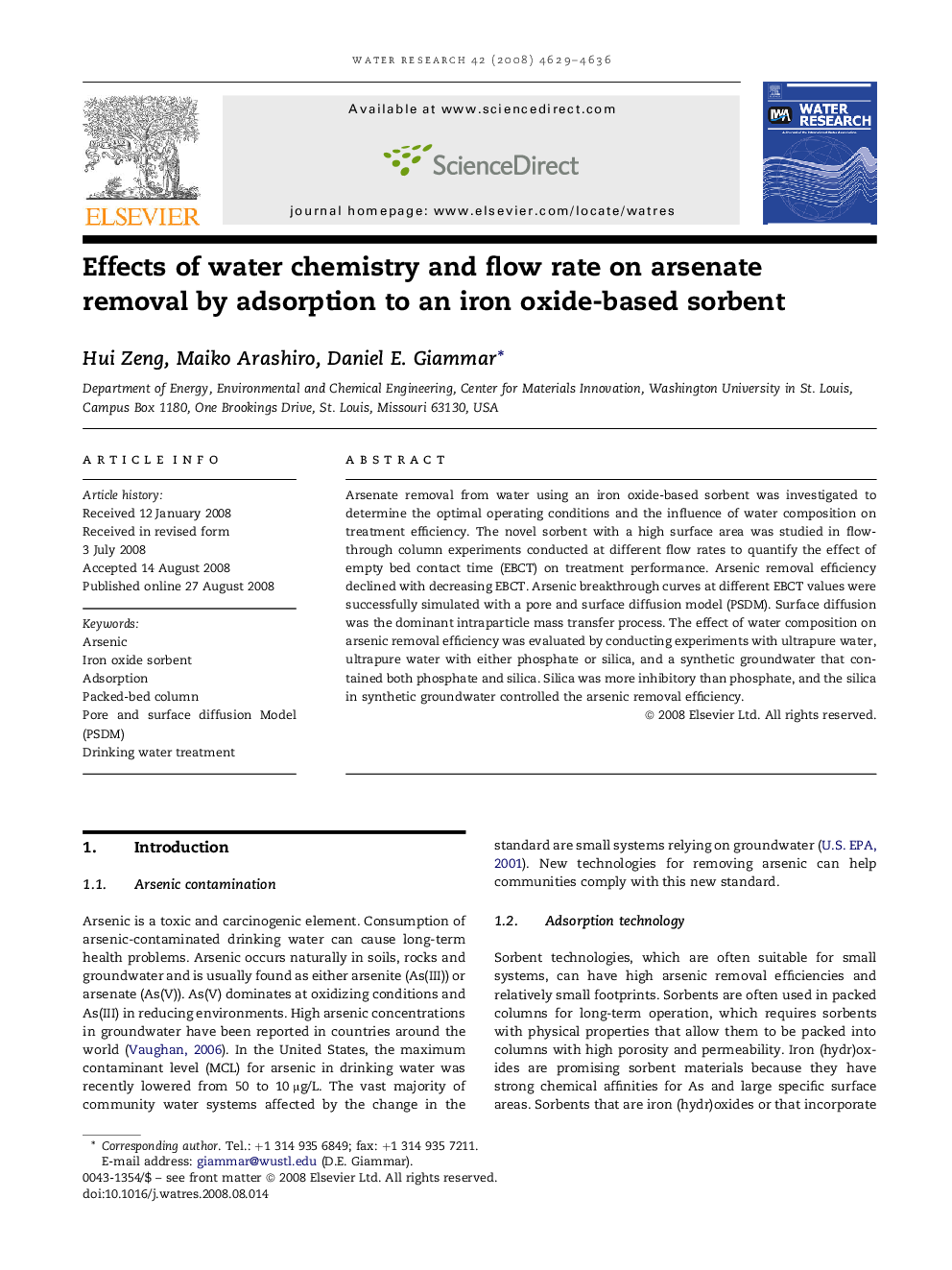| Article ID | Journal | Published Year | Pages | File Type |
|---|---|---|---|---|
| 4483414 | Water Research | 2008 | 8 Pages |
Arsenate removal from water using an iron oxide-based sorbent was investigated to determine the optimal operating conditions and the influence of water composition on treatment efficiency. The novel sorbent with a high surface area was studied in flow-through column experiments conducted at different flow rates to quantify the effect of empty bed contact time (EBCT) on treatment performance. Arsenic removal efficiency declined with decreasing EBCT. Arsenic breakthrough curves at different EBCT values were successfully simulated with a pore and surface diffusion model (PSDM). Surface diffusion was the dominant intraparticle mass transfer process. The effect of water composition on arsenic removal efficiency was evaluated by conducting experiments with ultrapure water, ultrapure water with either phosphate or silica, and a synthetic groundwater that contained both phosphate and silica. Silica was more inhibitory than phosphate, and the silica in synthetic groundwater controlled the arsenic removal efficiency.
